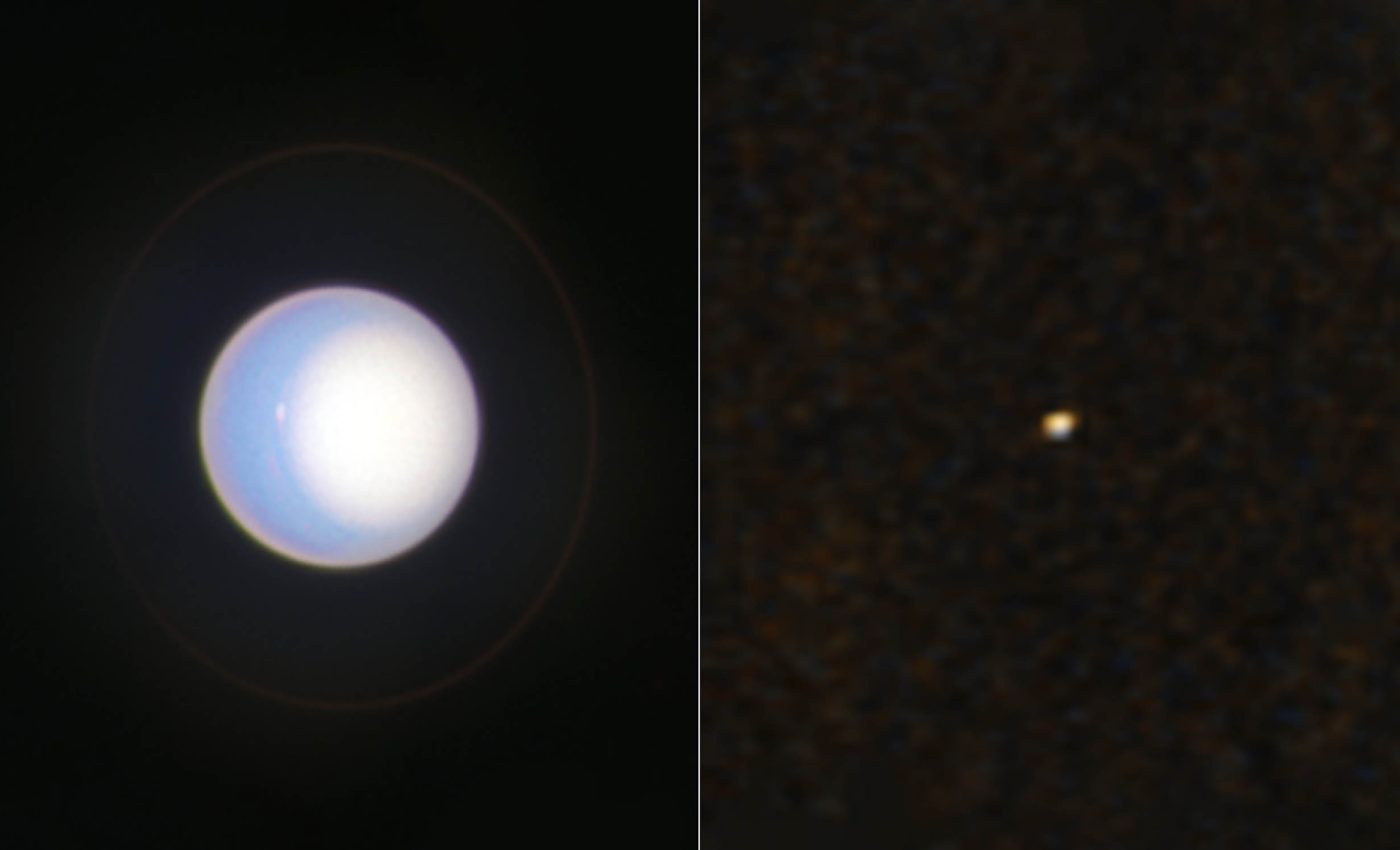
New photos of Uranus from Hubble and New Horizons
A special collaboration between NASA’s Hubble Space Telescope and New Horizons spacecraft had them simultaneously focus their viewfinders on Uranus.
The goal? To gather data from two distinct perspectives and enhance the knowledge of exoplanets — planets outside our solar system, similar to Uranus.
Stellar duet
The astronomers used Uranus as a proxy for similar planets outside the solar system.
They utilized high-resolution images from Hubble and contrasted them with the distant perspective of New Horizons.
The intention was to better predict what scientists see when imaging exoplanets through future telescopes.
“While we expected Uranus to appear differently in each filter of the observations, we found that Uranus was actually dimmer than predicted in the New Horizons data taken from a different viewpoint,” said Samantha Hasler, the lead scientist from the Massachusetts Institute of Technology (MIT) and New Horizons science team collaborator.
Shedding light on exoplanets
One of the primary methods to learn more about exoplanets is direct imaging.
This process involves gathering light from the observed planet and comparing its brightness at different wavelengths. The exoplanets extreme distance from Earth makes imaging difficult.
Scientists chose Uranus because many known exoplanets are gas giants and New Horizons was on Uranus’s far side, approximately 6.5 billion miles away.
This acreated a unique opportunity to study the planet’s twilight crescent — an impossible feat from Earth’s perspective.
Different perspective on Uranus
New Horizons could only perceive Uranus as a few pixels in its camera. Hubble is stationed in its low-Earth orbit and captured detailed atmospheric features on Uranus.
“Uranus appears as just a small dot on the New Horizons observations, similar to the dots seen of directly-imaged exoplanets from observatories like Webb or ground-based observatories. Hubble provides context for what the atmosphere is doing when it was observed with New Horizons,” Hasler further noted.
Understanding planetary atmosphere
The gas giant planets in the solar system have dynamic and unpredictable atmospheres with changing cloud formations.
This collaborative mission compared Hubble’s detailed view of Uranus to the observational data from New Horizons. This improved scientists’ understanding of atmospheric changes in exoplanets.
New Horizons distinct vantage point allowed researchers to discover that planets reflect light differently, depending on their phase.
Future Uranus research
NASA has several major observatories in development to advance humanity’s understanding of exoplanet atmospheres and their potential habitability.
Optimism surrounds these upcoming missions as they promise to shed light on distant worlds and refine the search for habitable planets beyond the solar system.
“Studying how known benchmarks like Uranus appear in distant imaging can help us have more robust expectations when preparing for these future missions,” Hasler said. “And that will be critical to our success.”
New Horizons contribution
NASA launched New Horizons in January 2006. It has contributed to a better understanding of the solar system and its farthest regions.
It conducted a historic pass of Pluto and its moons in 2015, providing detailed close-up images and data.
In 2019, New Horizons followed up with an in-depth exploration of Arrokoth, a remote planetary building block in the Kuiper Belt, offering insights into early solar system formation.
Using Uranus to understand exoplanets
This collaborative exploration of Uranus by Hubble and New Horizons is a step towards enhancing scientists’ understanding of exoplanets.
This exploration provided information to better understand Uranus and equipped scientists with insights on what to expect from future missions to exoplanets.
The results of this collaborative study will be presented at the upcoming 56th annual meeting of the American Astronomical Society Division for Planetary Sciences.
—–
Like what you read? Subscribe to our newsletter for engaging articles, exclusive content, and the latest updates.
Check us out on EarthSnap, a free app brought to you by Eric Ralls and Earth.com.
—–













